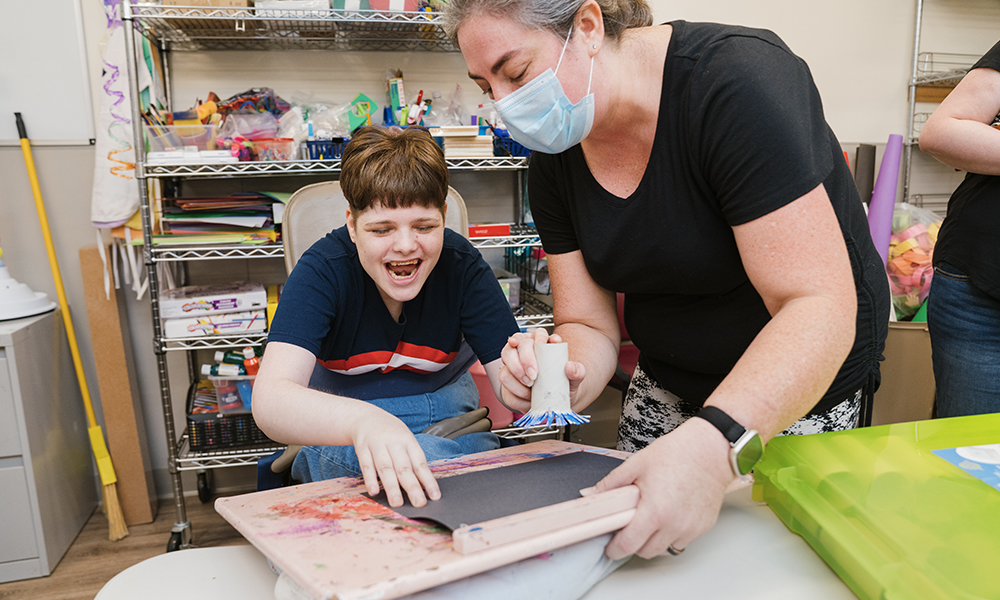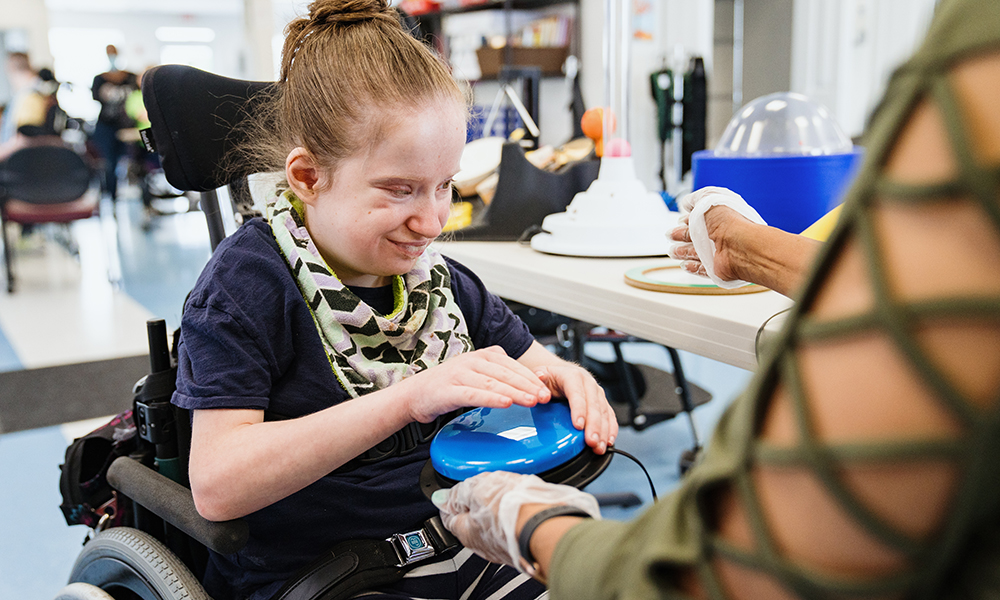What We Do
Forward Journey is more than just an adult day program; it’s a home away from home. A comfortable gathering place where participants can aspire, achieve, and celebrate their accomplishments among friends.

Attendees enjoy a fulfilling day of fun and friendship

From the moment participants come through the door, they’re greeted with enthusiasm by our staff and other attendees. Their day is made up of a variety of activities which may include:
Recreation
Participants can enjoy games, music, art therapy, adaptive sports, physical fitness, gardening, photography, pet therapy, reading aloud, watching movies, current events, using the computer, cooking & baking, birthday & holiday celebrations, history awareness—the list goes on.
Daily living skills
Our staff works with participants to maintain and improve skills in the activities of daily living, such as personal hygiene, toileting, dressing, feeding, sitting, standing, and walking. We use the MOVE™ program to improve functional mobility.
Community skills
We facilitate social interaction such as shopping, going to the library, attendance at social events, trips/walks at local parks, and community outreach opportunities.
We’re always coming up with new ways to make sure our participants look forward to coming every day!
A personalized plan supports each participant’s goals

Individuality and personal decision-making are at the heart of our program. To support our participants in making their own choices, each person has their own Person-Centered Plan (PCP). In addition to setting annual goals, the PCP documents important information about the participant’s:
- Health issues, status, and specific care instructions
- Adaptive equipment needs
- Personality
- Favorite activities, hobbies, or places to visit
- Interests and preferences
- Triggers for frustration or stress
- Best way to learn
- Non-verbal communications and what they mean
- Gross motor and sensory needs
Movement is weaved within everyday activities

Forward Journey has trained its entire staff in the innovative MOVE™ (Mobility Opportunities Via Education/Experience) program, which helps participants improve their sitting, standing, walking, and transitioning skills. This form of teaching embeds skill practice throughout the individual’s day in functional activities, making it fun and motivating.
As part of the MOVE™ program, Forward Journey uses two types of equipment—the Pacer and Activity Chair. The Pacer is a “gait trainer” which offers support in an upright position for those unable to walk independently. Individuals can engage their leg muscles and move their feet to walk. The Activity Chair allows a person to assume an active, seated position to participate in activities, especially creative arts.
MOVE™ offers life-altering results as participants can increase muscle tone, enhance digestion, and improve breathing and blood flow. Aside from the remarkable physical benefits, MOVE™ can also contribute to greater independence, personal dignity, and community inclusion.

Assistive technology helps participants engage
Assistive technology helps our participants engage in meaningful activities that support their physical and personal growth. Forward Journey combines these technologies with other forms of non-verbal communication, including gestures, facial expressions, pictures, and signing. There are two important tools we use—switches and verbal output devices.
Switches are a clear and simple way to demonstrate an action/reaction. For example, we may instruct a participant to press the switch (a five-inch battery-operated circle), if they want to join an activity or if the answer presented is correct. We can also attach the switches to other devices, such as kitchen activities where a participant can empty a measuring cup into a bowl. The voice output device produces a digitized voice for an individual who has limited or no means to communicate verbally.